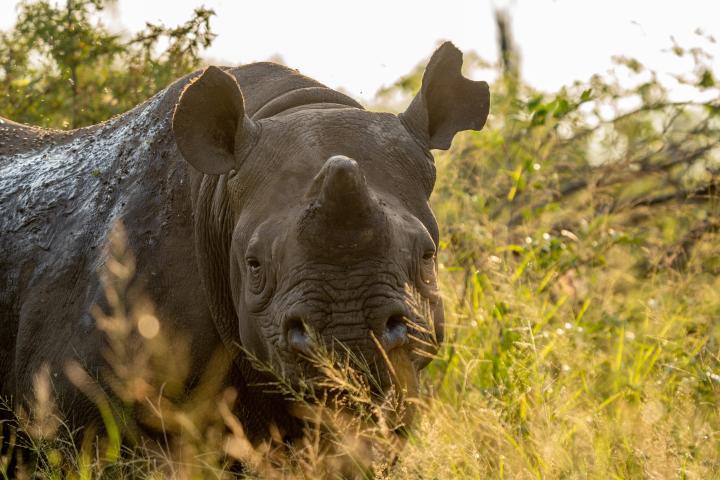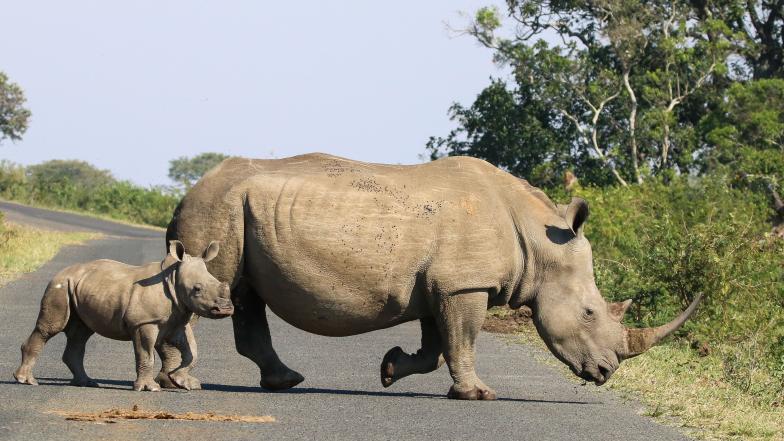New Study Shows Dehorning Significantly Reduces Rhino Poaching

Black rhino in the Greater Kruger region. All dehorned and showing some horn regrowth. (Credit all photos: Tim Kuiper).
A large-scale study led by researchers from the Southern African region has found that dehorning rhinos is the only intervention that significantly reduces poaching. Published in Science, the paper includes contributions from SEEC researchers Dr Timothy Kuiper and Prof Res Altwegg and draws on data from 11 reserves that collectively protect the world’s largest population of rhinos.
“This was an African team, led by African scientists and African managers, tackling an African crisis. That’s still too rare in global science, and it’s something I’m proud of. Dehorning should not be a magic bullet but buy us time to address the bigger problems - like poverty that drives poaching, horn demand in consumer countries, and corruption that facilitates crime. Another strategy is dismantling these criminal networks, these transnational criminal organisations. There needs to be intelligence-led investigations to disrupt those. We don’t want to have to dehorn rhinos. The first prize is allowing rhinos to be rhinos — with their horns intact,” explains Tim Kuiper, lead author on the paper.
Poaching Persists Despite Major Investment
Despite decades of anti-poaching efforts and the investment of around USD 74 million between 2017 and 2023, approximately 1,985 rhinos were poached during the study period, representing an annual loss of about 6.5% of the population. Most funding went towards law enforcement interventions, including ranger patrols, tracking dogs, surveillance systems, and access controls. These efforts contributed to over 700 arrests but showed no statistical evidence of reducing poaching rates.

Dehorning Achieves Significant Reductions in Rhino Loss
By contrast, the study found that dehorning, where rhino horns are safely removed to eliminate the poacher’s reward, led to a substantial (~78%) and immediate decline in poaching. This outcome was achieved with just 1.2% of the overall anti-poaching budget and was observed across eight reserves where 2,284 rhinos were dehorned.
While some poaching of dehorned rhinos continued, likely targeting horn stumps or regrowth, the findings suggest that dehorning can be a highly effective component of anti-poaching strategies. The authors note that regular dehorning, combined with strategic use of law enforcement, is needed to maintain its effectiveness.
Implications for Conservation Policy
The study highlights the limitations of enforcement-focused approaches in the face of persistent horn demand, inequality, organised crime, and corruption. It underscores the importance of evidence-based strategies to protect rhinos in a highly complex and dangerous conservation landscape.
“It’s important to check that our conservation interventions work as intended and keep working that way. For me, this project has again highlighted the value of collecting detailed data, both on the interventions that were applied and the outcome. It’s such data that makes robust quantitative analyses possible,” says Res Altwegg, SEEC director and author of the paper.
Read the full article here - https://www.science.org/doi/10.1126/science.ado7490
